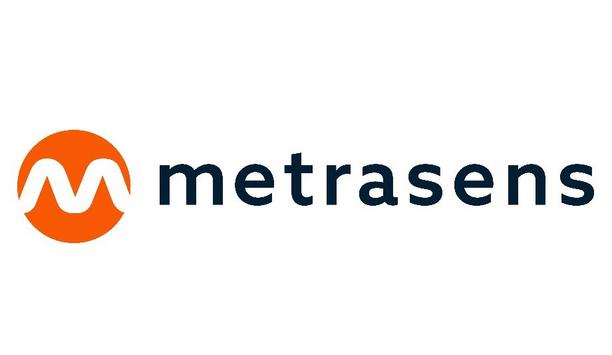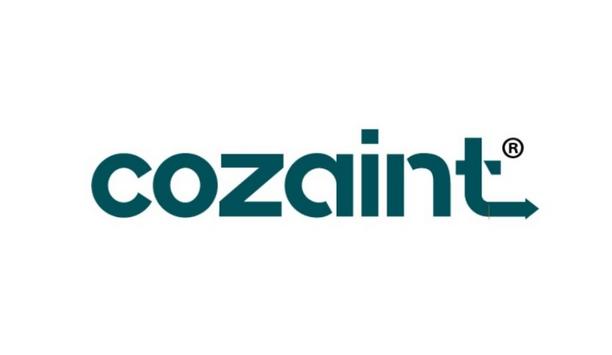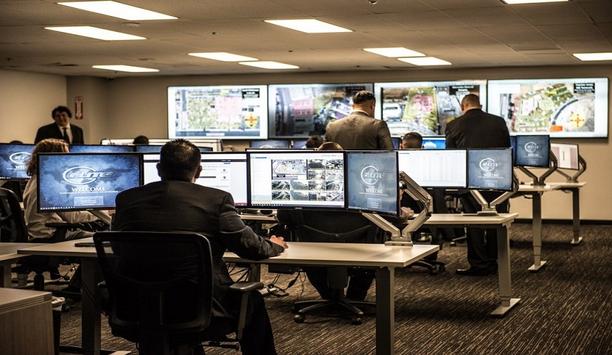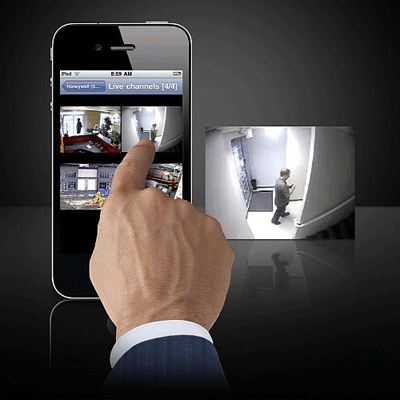Campus security systems
For K12 education pioneers, embarking on a journey to upgrade security controls can present a myriad of questions about finding the best-fit solutions and overcoming funding hurdles. A majority of public-school districts today are faced with outdated infrastructure and security controls, requiring necessary upgrades. By addressing these concerns head on, schools will ensure a safer environment for both students and staff, mitigating risks posed by unforeseen physical and digital threats. Common...
Educational institutions worldwide increasingly rely on robust wireless networks to enhance academic pursuits, safety measures, and operational efficiency. The campus environment, a complex network of interconnected buildings, and the humans navigating them require innovative technologies to meet these diverse needs. The solution lies in a new wireless protocol that provides an ideal fit for the long-range, low-power connectivity requirements of educational campuses: Wi-Fi-certified HaLow. Wi...
Metrasens, a provider of advanced detection systems for security and safety applications, is pleased to announce its partnership with the Central Indiana Educational Service Centre (CIESC), which provides cooperative purchasing programmes for member school districts across Indiana. Through this partnership, CIESC member schools, as well as 270 other districts that are members of other Education Service Centres (ESC) across Indiana, can purchase Metrasens Ultra weapons detection systems through...
An upcoming seminar for security professionals, hosted by Synectics on 14 May 2024 in London, aims to help public space operators make the right decisions regarding AI surveillance technology. AI-driven video surveillance ‘Navigating the Future: AI in Public Space Security’ is free to attend and will discuss how AI-driven video surveillance analytics can be used, proactively and forensically to protect members of the public. It is aimed at anyone responsible for security in a publ...
Shooter Detection Systems, an Alarm.com (NASDAQ: ALRM) company and the renowned gunshot detection provider of gunshot detection solutions has joined forces with the Partner Alliance for Safe Schools (PASS) to support their mission and advocate for critical school safety efforts. As part of its commitment to PASS, Shooter Detection Systems promotes the PASS guidelines for layered school safety and security among school administrators and public safety professionals. Shooter Detection Systems pr...
Cozaint, an innovator in video surveillance storage solutions, unveiled Marcia, a groundbreaking software platform that dramatically reduces storage costs while making video playback and reviews effortlessly. Cozaint Marcia™ Cozaint Marcia™ represents a significant leap forward in the video surveillance storage market. Traditional solutions often require expensive, disk-only storage infrastructure, causing high costs and complex management. Marcia disrupts this model by leveraging...
News
The Association of University Chief Security Officers (AUCSO), the pioneering organisation for security professionals working in Higher and Further Education around the world, has announced a compelling and exciting lineup of speakers for this year’s 40th Annual Conference, alongside the theme of ‘Unveiling the Added Value of Security Services’. The 40th AUCSO Annual Conference will be held at the University of Liverpool from Monday 8 April to Wednesday 10 April 2024. The conference is open to all AUCSO members and will be hosted by Andrew Molloy, AUCSO member and Head of Campus Support Services at the University of Liverpool. Contributions of security services AUCSO Chair, Oliver Curran, said: “At this year’s Conference we will explore the dynamic landscape of security services and embrace the opportunity to unveil not just the shield that our university and college security teams provide, but the intrinsic added value they bring." “Security is not merely a safeguard; it is a catalyst for confidence and an embodiment of trust. Together, we will illuminate the often unseen contributions of security services, recognising their role in shaping a resilient and prosperous future for us all." Break-out sessions The Conference will be opened by Professor Tim Jones, Vice-Chancellor University of Liverpool and the keynote speech will be from Tim Collins, OBE on Global Conflicts: Navigating the Impact on the Campuses. There will also be engaging and thought-provoking break-out sessions as follows: Heather Baily, QPM and Paul Fullwood, Chair & Director for Inspections and Enforcement, Security Industry Authority (SIA) - How recent changes within the SIA can add value to the Higher Education Security Sector. Gus Hodson, Key Account Director, Dataminr - How Campus Security Pioneers can embrace Artificial Intelligence (AI) and Machine Learning. Christine Clark, Mental Health, First Aid England and Richard Yates, Chair, AUCSO Mental Health SIG - Mental Health on Campus: Security First Responders or Only Responders? Kenny MacLeod, Risk Management Resources Ltd - Dealing with campus protests and preparing Campus Security for the Higher Education (Freedom of Speech) Act 2023. Dave Wilson, Regional Modern Slavery & Organised Immigration, Crime Coordinator, Regional Organised Crime Unit, West Midlands Police - Chinese Student vulnerability to organised crime influence. Alan Cain, Head of Security and Emergency Management University of Salford - Proactive Measures and Preparedness for Emerging Risks on Campuses. Darren Chalmers, Stevens Group, COO & MD, EMEA/APAC Critical Arc - Bridging the Gap between Cyber and Physical Security on Campus. Daniel Frith, Sales Director, DTS Solutions - Enhancing Campus Security through Technology Integration. Number of panel discussions Furthermore, there will be a number of panel discussions that offer immense value to members covering: AUCSO’s Benchmarking launched recently in partnership with ISARR with Julie Barker and Adrian Dennehy, AUCSO and Nick Beale and Russ Huxtable, ISARR. Martyn’s Law – ‘What are we waiting for’ with Figen Murray, moderated by Nathan Emmerich. The Value of Transformation for Campus Security, Empowering Campus Security VAWG Challenges and Solutions. Incredible achievements across 2023 All envoys will be able to visit the show in between workshops and talks to network, share, and learn New suppliers and AUSCO partners will be supporting the Conference with an exciting exhibition of products and services. All delegates will be able to visit the exhibition in between workshops and talks to network, share, and learn. There will be a Welcome Reception and Exhibitors Fayre on a Monday evening in the Conference Centre and a Networking Evening is planned for Tuesday evening to be held at Anfield, the home of Liverpool Football Club. Celebrating some incredible achievements across 2023, a glittering Black Tie Gala Dinner and Awards Evening will take place on Wednesday evening when the winners of the AUCSO Awards will be announced. Opportunities for networking Commenting on the Conference, AUCSO Chief Operating Officer, Julie Barker, said: “We are very much looking forward to our 40th Annual Conference, and we are committed to an excellent lineup of thought-provoking, topical speakers, and the opportunities for networking. There will also be some exciting additions to our 40th anniversary conference. We are looking forward to seeing corporate partners and our members from across the globe as we discuss the ‘value’ that our security services add to our campus communities on a day-to-day basis." “Last year we had a record attendance, and this year we are determined to beat that. If you would like to attend, do register as soon as possible as places are filling up quickly.” Conference open to AUCSO members The Conference is open to AUCSO members. Registration includes: Attendance at all Conference sessions, refreshments, and lunches. Attendance at all social events including: Monday 8 April: Welcome Reception, dinner with refreshments at the conference centre. Tuesday 9 April: Networking Evening, dinner with refreshments which will take place at Anfield – the home of Liverpool Football Club. Wednesday 10 April: Gala Dinner and Awards Evening which will take place at The Lutyens Crypt and Treasury at Liverpool Metropolitan Cathedral. Accommodation at the Conference hotel (Check-in on Monday 8 April and check-out on Thursday 11 April). Registration for this year’s Conference closes on Friday 11 March 2024.
ABM, a pioneering provider of facility services, infrastructure solutions, and parking management announced enhancements to its leadership team, including the promotion of Valerie Burd to lead the Company’s Business & Industry segment, and the addition of external talent to drive future growth for the Education segment as well as engineering solutions across the U.S. Advancing internal talent “These leadership appointments are a testament to ABM’s exciting trajectory, our relentless focus on growth in these areas, and our ability to attract and retain the best talent in the industry,” said Scott Salmirs, President and CEO. "These changes also reflect ABM’s commitment to building a great culture and team through advancing our internal talent as well as welcoming outside perspectives." The following appointments reflect ABM’s continued commitment to building the strongest team in the industry, accelerating growth, executing its ELEVATE programme, and unlocking significant long-term value for the Company. Valerie Burd Valerie will lead the segment’s North American growth and service delivery strategy Valerie Burd has been promoted to President of Business & Industry (“B&I”), ABM’s largest segment. In this new role, Valerie will lead the segment’s North American growth and service delivery strategy to drive profitability, gain operational efficiencies, and build upon ABM’s capabilities through new offerings and innovations. Work experience With nearly 20 years at ABM, including three years as President of the Education segment, Valerie has demonstrated her ability to grow the business, deliver strong results, and implement operational improvements, while driving deeper client relationships and championing our team members.Before joining ABM, Valerie held roles with Tishman Speyer Properties, Jones Lang LaSalle, and CBRE. She has also served on the Board of ISSA, the worldwide cleaning industry association. Scott Camp Scott Camp has joined the Company as President of the Education segment, following Valerie Burd’s promotion. In this role, Scott has leadership responsibility for growing Education’s portfolio of grade K-12 school and higher education clients, expanding the scope of services and solutions, developing talent, and continuing the rollout of ELEVATE technology across the segment. With extensive operations and business development experience, Scott comes to ABM from Iron Mountain after serving in various leadership roles over the last 20 years, including pioneering a billion-dollar book of business with impressive financial results. Martin (Marty) Montagne He will also be responsible for ensuring that engineering operations deliver sustainable profitability Martin (Marty) Montagne has joined the Company as SVP and President of Engineering. In this newly established role, Marty will lead all of ABM's engineering operations across the U.S., encompassing over 10,000 licenced engineers. He will also be responsible for ensuring that engineering operations deliver sustainable profitability while expanding best-in-class capabilities to maximise revenue-generating opportunities through cross-selling and strong client partnerships.Most recently serving as President and Chief Operating Officer of Conquest Firespray, a private equity-backed manufacturing company, Marty previously served as Managing Director of Engineering Services at Jones Lang LaSalle. Before that, he held a variety of leadership roles at Johnson Controls. Understanding and connection Rene Jacobsen, ABM’s Executive Vice President and Chief Operating Officer added, “I am very pleased with Valerie’s well-earned promotion to lead our largest segment." "Her vision and passion for ABM, deep understanding of our clients and business, and strong connection with our client-facing teams are invaluable assets that will serve her well as she embarks on this new opportunity.” Growth and transformation Jacobsen continued, “I am also thrilled that Scott and Marty are joining us at a pivotal time in our growth and transformation journey." "Both are experienced and proven pioneers in the engineering and facility services industries, with each bringing unique abilities to serve our clients in new ways, build upon our collaborative culture, and grow our business.” In their new roles, Valerie, Scott, and Marty will all report directly to Jacobsen.
Allegion US, a pioneering security products and solutions provider, is a Mission Partner of The "I Love U Guys" Foundation, which operates programmes for schools' crisis response. Partnering with The "I Love U Guys" Foundation reflects Allegion's ongoing efforts to drive productive conversations on school security and support organisations that are advocating for safer students, every day. K-12 safety and security As a company that has a mission of pioneering safety, Allegion has sustained a long-term focus on sharing best practices in K-12 safety and security, with a sincere goal of promoting positive changes in school environments. One recent example of these efforts is the company's new "The Changing Face of School Security" podcast, where Allegion brings together industry experts, community pioneers, non-profit organisations, law enforcement, and educational professionals to foster meaningful dialogue on the topic. "I Love U Guys" Foundation Programmes for crisis response, the SRP, and post-crisis reunification, the SRM are used in more than 50,000 schools The "I Love U Guys" Foundation similarly fosters dialogue and programmes in safety, preparedness, and reunification in schools. This organisation was started in 2006 by Ellen and John-Michael Keyes following a school shooting that took the life of their daughter, Emily. On that day, Emily sent two text messages – one to her mother, "I love u guys. K" and to her father, "I love you guys." The Foundation's programmes for crisis response, the Standard Response Protocol (SRP), and post-crisis reunification, the Standard Reunification Method (SRM), are used in more than 50,000 schools, districts, departments, agencies, organisations, and communities around the world. Door locks for school safety "At The 'I Love U Guys' Foundation, we are strong advocates for the ability to lock classroom doors from inside the classroom, as the Sandy Hook Advisory Commission recommended in their Final Report in 2015," said Carly Posey, mission director for The "I Love U Guys" Foundation. "We are proud to begin our collaboration with Allegion, who will help us fulfill our mission. Allegion brings much more than their door locks to our collective mission of school safety – it's clear through their partnerships and industry participation that they are authentically invested in helping communities create a safer school environment." Mission Partner Allegion's long-standing safe school efforts are also rooted in collaboration with Safe and Sound Schools Allegion joins as a Mission Partner for The "I Love U Guys" Foundation, which goes beyond sponsorship or donations. The work together leverages relationships, community, brand, and expertise to build stronger communities and schools through stronger partnerships. Allegion's long-standing safe school efforts are also rooted in collaboration with Safe and Sound Schools, Partner Alliance for Safer Schools (PASS), and the Security Industry Association (SIA). Comprehensive and best practice solutions "By supporting and working with non-profit organisations, the security industry, manufacturers, educators, law enforcement, and community pioneers, we can collectively develop comprehensive and best practice solutions – but it takes a lot of authentic collaboration to get there," said Ken Cook, director of national school safety and advocacy, Allegion US. "Our goal with our work in the K-12 space is to both lend our support and leverage our expertise for good. We believe that the meaningful relationships we're building with organisations like The 'I Love U Guys' Foundation will ultimately have a positive impact on students – helping them feel safer and enabling them to learn and thrive." Schlage and Von Duprin Allegion has prioritised the creation of resources that promote security solutions based on best practices For over a century, Allegion's renowned brands Schlage and Von Duprin have been dedicated to securing educational facilities. Building on this legacy, Allegion has prioritised the creation of resources that promote security solutions based on best practices recommended by past incident reports and credible sources like the U.S. Department of Homeland Security. This approach results in security solutions that align with the highest standards and are designed to effectively address the evolving challenges faced by educational institutions. Best practices-first approach Another way Allegion is bringing its best practices-first approach to life is by giving individual experts an open platform for conversation by way of Allegion's "Changing Face of School Security" podcast. In its first few months, Allegion's Paul Timm, director of education safety, has hosted more than 10 pioneering changemakers from across the field – including John-Michael Keys, the founder of The "I Love U Guys" Foundation. All guests are focused on learning and moving forward together, to make schools safe. Safe school environment "We are aiming to go beyond facilities and locks to share valuable advice and truly help the K-12 industry," said Melany Whalin, marketing manager for education, Allegion US. "One of Allegion's core values is centred on serving others, and that forms the foundation of our approach to school security and explains why we are so invested in establishing a safe environment for students."
Access controls are not just for business or residential buildings. They are crucial in schools because they safeguard the students and the building. The well-being of students, employees, and visitors depends on maintaining a safe and secure environment. “One report from Teaching Times suggests almost half of UK schools experienced technology theft in the last three years,” said Security World Market, UK. Why are access controls essential in schools? Access control refers to the systems and measures put in place to regulate who can enter or exit a building or specific areas within it. Safety: Access control systems help prevent unauthorised individuals from entering school premises, reducing the risk of intruders or unwanted visitors. Protecting valuable assets: Valuable assets such as computers, equipment, and confidential records are safeguarded. Emergency response: In emergencies, such as fires or lockdown situations, access control systems help manage the movement of individuals, ensuring a more efficient and safer evacuation or lockdown process. Best practices for access controls in schools Every practice has to be by the UK’s national school inspection body. Access Control System Design Collaborate with security experts to design a tailored access control system that suits the specific needs of the school. This includes determining which areas need restricted access and the types of access control technologies to be used. Biometric Access Control System Implement biometric systems for high-security areas. Biometrics, such as fingerprint or facial recognition, provide a higher level of security by ensuring that only authorised individuals can gain access. Door and Gate Access Install secure locks and access control mechanisms on all exterior doors and gates. Consider card readers, keypads, or proximity cards for entry. Visitor Management Implement a visitor management system that requires all visitors to check in at a designated entry point. Issue visitor badges that identify authorised visitors. Access Control System Installation Ensure that the installation of access control systems is carried out by trained professionals to guarantee proper functionality and integration with other security systems. Access Control System Maintenance Regularly maintain and update access control systems to ensure they remain effective. This includes software updates, hardware checks, and routine inspections. Emergency Protocols Develop and communicate clear emergency protocols that involve access control systems, ensuring that staff and students know what to do in various situations. KBO's access control systems for schools KBO commercial access control systems are suitable for a wide variety of premises, including schools and other educational institutions. KBO also offers the option to integrate commercial door entry systems with other security systems for seamless and efficient centralised management.
The Security Executive Council (SEC) is accepting applications for its annual scholarship programme, offering up to $7,500 to qualifying students enrolled in specific academic programmes of study in the 2024-2025 academic year. Scholarship programme The SEC launched the scholarship programme in 2022 to encourage and support next-generation pioneers at its partner academic institutions, which are recognised for excellent programmes in security, risk, and intelligence. Each $2,500 Next Generation Security Leader Scholarship will be awarded to a deserving student enrolled in one of the following academic programmes: Kennesaw State University Coles College of Business’ Bachelor of Business Administration with a major in Information Security and Assurance, or the Institute for Cybersecurity Workforce Development's Bachelor of Science in Cybersecurity. University of South Carolina – Darla Moore College of Business’ Bachelor of Science in Risk Management and Insurance. Mercyhurst University’s Bachelor of Science in Data Science, Bachelor of Arts in Intelligence Studies, Bachelor of Arts in Business & Competitive Intelligence, or Bachelor of Science in Cyber Security. Application criteria The SEC Scholarship Committee will award the scholarships by the universities’ criteria and SEC input regarding security leadership potential. The committee comprises SEC staff, successful former security executives, and current security practitioners from well-known corporations, as well as university faculty. Applications must be submitted by March 10, 2024.
Morse Watchmans, the industry pioneer in key control and asset management systems, is showcasing its Emergency Key Grab (EKG) Kit at booth #3255 of the 2024 Future of Education Technology Conference (FETC), January 24-26 at the Orange County Convention Center in Orlando, FL. This featured solution centers around Morse Watchmans’ proprietary electronic key control system and includes additional materials and support required to provide first responders with fast, secure access to keys in the event of a school lockdown or emergency. Emergency response, key control “We introduced the EKG last year to meet schools’ needs for both a swift emergency response and a secure storage space for essential keys,” said Tim Purpura, VP of Global Sales and Marketing, at Morse Watchmans. “We look forward to showcasing this solution at our very first FETC as we believe it has the potential to positively change how schools around the country formulate both their emergency response and key control plans.” EKG Kit inclusions The EKG Kit is a comprehensive solution consisting of new and exclusive Morse Watchmans products and materials, including: A 1-module or greater KeyWatcher Touch System, Morse Watchmans’ award-winning flagship system. Color-coded SmartKeys and KeyRing with Hubs. Unique KeyWatcher System First Response KeyRing Identification Label. Educational Materials: Implementing Key Control in K-12 Schools Tip Sheet and K-12 Schools. Key Control Playbook Hardcopies. One-on-one Educational Training from Morse Watchmans. Template and Guidelines for Writing a K-12 School District Key Control Policy. KeyWatcher Touch System With a unique PIN code or other designated credential, responding officers or SROs can swiftly retrieve the required keys Using the EKG Kit materials, schools can ensure that emergency keys are securely housed and readily accessible to local first responders. With the featured KeyWatcher Touch System, critical school keys are securely stored within individual compartments with each key uniquely assigned and tracked using the included SmartKeys and KeyRing. With a unique PIN code or other designated credential, responding officers or school resource officers (SROs) can swiftly retrieve the required keys, such as those for locked classrooms or secured areas, enabling them to enter and address the situation promptly. Centralise key management In addition to facilitating emergency response, an EKG Kit utilised in K-12 schools enhances general security protocols. The included products and solutions enable schools to centralise key management, ensuring that keys are always properly secured and accounted for, and only accessible by authorised personnel. Moreover, the KeyWatcher Touch system can be further networked with additional Morse Watchman products, such as the SmartKey® electronic locker systems for the secure, controlled storage of small assets, as well as the KeyWatcher® Fleet software solution, providing schools with a clear record of who has used a specific vehicle key, enabling administrators to monitor vehicle availability, maintenance schedules, and overall fleet utilisation.


Expert commentary
In the early stages of childhood education, kindergarten imparts foundational principles that shape future behaviour. Today, you can think about cloud computing in a similar manner: it has become a fundamental element in the architecture of modern technology. The cloud now plays a critical role in digital interaction, security, and infrastructure development. Far from being just another tool, the cloud is a cornerstone, providing essential support for the intricate network that supports today's digital ecosystem. Vomplex digital systems Much as kindergarten lessons lay the groundwork for cognitive development, the cloud offers base capabilities that are vital for constructing and operating complex digital systems. Recent advancements in cloud-based security — particularly in access control and video surveillance — emphasise the importance of cloud computing. It has been instrumental in unifying fragmented security systems, similar to how basic social principles taught in kindergarten help diverse children come together as a unit. The role of cloud computing in our technological world is multifaceted and continuously growing The role of cloud computing in our technological world is multifaceted and continuously growing. It has evolved into a space where innovation is cultivated and security commitments are maintained with vigilance. The fusion of artificial intelligence and analytics into cloud services signifies a concerted effort toward a future that is more cohesive, intelligent, and secure. Significant technological progress As we delve deeper into this topic, it will become evident that cloud computing, like the pivotal lessons of kindergarten, is indispensable. It quietly enables significant technological progress, mirroring the foundational principles taught in our formative years in both its essential nature and its growing influence. Play Fair: Technological Developments in Cloud-Based Security The past year has been a period of significant innovation in cloud-based access control and video surveillance. Cloud computing has evolved into a robust platform that fosters the creation of integrated security systems. These systems consolidate access control and video surveillance into a unified experience, demonstrating the cloud's potential to seamlessly combine disparate systems. Substantial industry progression The advent of edge computing has boosted bandwidth efficiency and accelerated data processing The incorporation of artificial intelligence and analytics into cloud services marks a substantial industry progression. This development provides businesses with advanced tools for in-depth analysis and intelligent decision-making, enabling them to not only gather comprehensive insights but also strengthen their security measures. The cloud has eased the transition to new technologies and emphasised a commitment to cybersecurity, with encryption protecting data integrity in transit and at rest. Simultaneously, the advent of edge computing has boosted bandwidth efficiency and accelerated data processing, highlighting a consistent drive to refine and adapt. The trend of integrating cloud security systems with other business platforms help create unified ecosystems, reflecting a broader narrative of security professionals’ pursuit of progress and enhancement. Potential future disruptions Wash Your Hands: Pandemic-Induced Transformation in Cloud Services As we all know, the COVID-19 pandemic necessitated a swift transition to remote operations, with cloud computing forming the backbone. i The urgent need for cloud solutions was apparent as businesses adopted remote collaboration tools, work-from-home policies, and virtual workspaces. This transition increased the demand for cloud services and prompted more adaptable and cost-effective pricing models. Recognising the critical role of cloud services, organisations enhanced their investment to safeguard operations against potential future disruptions. The pandemic fundamentally altered the perception and valuation of cloud computing, emphasising its critical role in sustaining business operations. Scaleable digital infrastructures The growing demand for SaaS has led integrators to create scaleable digital infrastructures Share Everything: Systems Integrators and the Adoption of Cloud Systems integrators have done much to realise the cloud’s potential. The growing demand for Software as a Service (SaaS) has led integrators to create scaleable digital infrastructures tailored to specific business needs.. The use of the cloud for data backup has improved efficiency and increased organisations’ ability to cope with disruptions. Although there has been a gradual shift among integrators toward cloud solutions, effectively marketing and supporting SaaS business models remains a challenge. But the possibility of continuous revenue streams through managed services is promoting broader adoption of cloud technologies. Cloud-based security solutions Live, Learn, Think: Enterprise-Level Cloud Adoption There is an increasing trend among large enterprises to adopt cloud-based security solutions. The shift toward VSaaS indicates a move towards subscription models that offer financial and scalability advantages. This transition is more than a mere operational change. Rather, it represents a commitment to the expansive potential for growth and innovation that the cloud offers. But let’s face it: the ‘cloud’ journey is accompanied by challenges, particularly concerning data security. Providers must deliver robust data protection measures to ensure the success of cloud-based security services, which depends not just on technological progress but also on fostering trust with clients. Addressing cybersecurity concerns The hybrid model offers a balanced solution for businesses looking to merge these two environments Baby Steps: Hybrid Cloud and On-Premises Infrastructure The hybrid model, which combines cloud with on-premises infrastructure, continues to be a strategic choice for many organisations. While the cloud provides flexibility and ease of access, on-premises solutions offer control over data security and comply with regulatory demands. The hybrid model offers a balanced solution for businesses looking to merge these two environments. Be Trustworthy: Cybersecurity Measures and Communication Transparent communication is key in addressing cybersecurity concerns with customers and partners. Companies that are transparent about their security protocols, including encryption and regular updates, build trust. Certifications such as SOC 2 Type II affirm a dedication to security, and proactive educational resources ensure that users are well-informed about best practices. Decision-making processes Cloud computing has become the cornerstone of modern security strategies Look: The Future Outlook for Cloud-Based Security Solutions Looking forward 5-10 years, cloud-based security solutions are expected to become even more central to organisational decision-making processes. The cloud is poised to become the hub for predictive decision-making, using AI algorithms and extensive data to proactively manage security risks. This vision of an intelligent, integrated approach to security, with the cloud enabling swift, collaborative responses to threats, is almost at hand. Cloud computing has become the cornerstone of modern security strategies, moving beyond its initial role as a digital transformation tool. As we look to the future, the cloud is set to redefine security paradigms and anchor a new era of intelligent, predictive security operations.
The average business owner or investor has some kind of security precaution in place, especially in the after-hours when there are fewer deterrents to inhibit criminal activity. Security guards, video surveillance systems, motion sensor lights, or even just fake cameras placed around the property are some of the common options people choose. Future of overnight security Smart business owners are starting to realise, however, that some of these traditional security measures are becoming antiquated and no longer cutting. The now and future of overnight security is in remote guarding. Pioneered by companies like Los Angeles-based Elite Interactive Solutions, which was founded back in 2007, remote guarding is revolutionising the overnight security business. Minimising criminal activity Remote guarding is fast becoming the most popular choice among commercial end-user property owners Remote guarding utilises a combination of cutting-edge technology, “digital guards,” highly trained security agents, and local law enforcement if and when necessary to minimise the potential of criminal activity. For those adequately enlightened to its overwhelmingly impressive crime prevention capabilities, remote guarding is fast becoming the most popular choice among commercial end-user property owners to secure and protect their investments. What Is remote guarding? Remote guarding is a revolutionary concept and increasing trend in security systems that utilises a combination of methods to effectively analyse potential threats to property. Cameras and/or other monitoring devices running highly advanced algorithmic software are installed in strategic areas or vulnerable places onsite and remotely located security agents are immediately notified of any activity within a designated perimeter of the property. A blend of AI, cybersecurity, and video analytics When properly deployed by an expert provider, the technology stack includes a proprietary blend of video analytics, artificial intelligence, cybersecurity, and more. Done right, “noise” is effectively filtered out, allowing agents to act on legitimate alerts and achieve zero false alarms communicated to first responders. Today, there are a lot of terms and descriptions tossed around about remote guarding, remote video, virtual guarding, etc., but those attributes must be present to represent the true definition of the offering and its many virtues. Realtime situational awareness Many systems have a two-way speaker that allows the security agent to give a verbal warning When specially trained security agents are alerted to trespassers, possible intruders, or other suspicious activity, they analyse the situation in real-time and determine the necessary level of action. Many systems have a two-way speaker that allows the security agent to give a verbal warning, known as a voice-down, to the individual(s) that they are being watched. Most perpetrators, often believing the response is emanating directly from security personnel on the property itself rather than from a remote command centre, flee immediately. However, if the threat persists, the security agent enlists local law enforcement to get on the scene. Customised remote guarding When properly deployed, remote guarding systems are also customised to specific properties. A team of consultants visits the client’s property to evaluate its vulnerabilities and where to best place cameras and/or other monitoring devices for system efficacy. Traditional security shortfalls According to Keith Bushey, a retired commander for the Los Angeles Police Department, there is much frustration between law enforcement officers and potential victims of crime due to the historically unreliable performance of traditional burglar alarm systems and central monitoring stations. He states about 90% of security-related calls are false alarms, a problem that has been well-documented through the years. Onsite challenges When a legitimate emergency does occur, the perpetrators have often already done their damage When a legitimate emergency does occur, the perpetrators have often already done their damage and/or escaped by the time law enforcement arrives. Onsite security guards are not the remedy either as they bring their own set of issues and challenges. Unexpected costs Traditional security systems can also have unexpected costs. The cost is not only in the security guards’ paycheck or the cost of the equipment itself. The cost comes when an actual incident occurs. In worst-case scenarios, the security guard(s) are injured, the business suffers inventory loss, and/or damage is sustained to the property. The medical and other costs for the security guard(s), the loss of inventory, property damage, deployment of law enforcement resources, and possible fallout of legal expenses all add up. Even in the best-case scenario, false alarm expenses incur if law enforcement is dispatched. These, among many others, are some of the primary issues that remote guarding resoundingly answers as a superior alternative. A bounty of benefits Remote guarding systems have been proven to cut costs and be more effective than traditional security systems. Even though the monthly monitoring costs of remote guarding are significantly higher than traditional intrusion detection system monitoring, the much higher effectiveness in crime reduction, elimination of false alarms, and augmenting or replacement of manned guards result in a substantially higher return on investment (ROI) to the end user. Easy tracking of threats The security cameras already have their image captured on record, making them easier to track down For example, case studies have demonstrated reduced security costs for clients by 60%, on average. These reductions have come from the costs of security staff, inventory, or property loss, plus saving money on insurance premiums and deductibles. The nature of remote guarding reduces the risk and costs of false alarms, with professional security agents able to determine an actual threat before law enforcement is called. In a rare instance when a perpetrator escapes before law enforcement arrives or can detain the individual(s), the security cameras already have their image captured on record, making them easier to track down and identify. Reduction of false alarms The significant reduction in false alarms is greatly appreciated by law enforcement, as it allows them to focus on real emergencies or crises. Better relationships are also developed between clients and law enforcement, as remote guarding systems are highly reliable in providing accurate and real-time information to officers as they approach the scene. In short, it assists law enforcement in doing their job more effectively, as well as more safely thanks to having eyewitness information before engaging in an active crime scene. Partnership When you combine the decreased cost with the increased efficiency and success rate, it is easy to see why many commercial end-user property owners across the country are making the shift to remote guarding. It’s also an outstanding opportunity for professional security dealers and integrators to partner with a remote guarding services provider to bring a superior solution to their end customers and pick up a recurring monthly revenue stream in the process.
The autumn equinox, which marks the start of autumn, occurs this weekend on Saturday, September 23. With darker evenings ahead, the experts at ADT have shared five ways to maximise your home's security. Author's quote Michele Bennett, General Manager at ADT UK&I comments: “Opportunistic thieves use darkness to their advantage, so it’s no surprise that the number of burglaries committed increases when the darker nights draw in." He adds, "Our 2022 burglary report found that burglaries are most common at night, with 58% of burglaries occurring between 6 p.m. and 6 a.m. Taking steps to optimise your home’s security before the clocks go back this year will provide reassurance that your property is as secure as possible.” Five ways to secure your property: Get a monitored alarm installed: A visible alarm system is a strong deterrent to potential burglars, as criminals are less likely to target a home that is protected. In the event of a break-in, a monitored alarm will alert you, your keyholders and depending on the package you take out, the police, ensuring a swift response to an alarm activation. Light up the dark: Well-lit exteriors make your home less appealing to potential intruders. Install motion-activated lights around any entry points, particularly porches and gardens, which alert you to movement on your property. This will also prevent burglars from operating under the cloak of darkness and increase the chance of a passerby spotting suspicious activity. Trim your garden landscape: Thieves look for escape routes and hiding spots when deciding which homes to break into, making gardens with high, overgrown hedges more likely to be targeted. This is especially true in the darker evenings, so be sure to give your garden a thorough tidy-up to make your property less likely to be targeted. It’s also advisable to ensure any tools are locked away in sheds and garages that could assist a burglar such as ladders, or a garden spade to force entry. Be smart with your lights: Using smart plugs allows you to turn on a few well-appointed lights and radios or televisions from any location from your phone. Used in conjunction with an outdoor camera or video doorbell, you can have lamps plugged into smart plugs come on when motion is detected. Programming lights to come on at different times throughout the night will help to deter burglars by making your property look occupied. Purchase a smart doorbell or outdoor camera: Smart doorbells are an effective way to deter burglars as they provide evidence in the event of a break-in, package theft, or other suspicious activity around your home. They also notify you when someone is at your door reducing the chance of you being caught out by a late evening or early morning robbery. Further encroachment Smart doorbells also act as a deterrent to unscrupulous door-to-door sellers and con artists, as video footage is recorded. In the event of a late-night door knock, you can see and speak to whoever is at your front door, without having to open the door. ADT’s new outdoor camera also has two-way audio and a high-pitch deterrent siren so you can warn off anyone from your property to deter any further encroachment.
Security beat
Companies at GSX 2023 emphasised new ways that technologies such as artificial intelligence (AI) and the cloud can address long-standing issues in the security market. Among the exhibitors at the event in Dallas were companies seeking creative ways to apply technology, lower costs, and make the world a safer place. Reflecting on the exhibition, here are some additional takeaways. Expanding AI at the edge i-PRO is a company reflecting the continued expansion of edge AI capability in the security market. Today, more than half of the company’s lineup supports AI at the edge so the customer has a wide choice of form factors when seeking to leverage the feature set. AI processing relay, extended warranty i-PRO is increasing their warranty period from 5 to 7 years, which could be a lifetime warranty in some cases I-PRO also has an “AI processing relay” device that accepts non-AI video streams and applies edge analytics. AI has progressed from a high-end technology to a feature available in a variety of cameras at different price points. i-PRO is also increasing its warranty period from 5 to 7 years, which could be a lifetime warranty in some cases depending on a customer’s refresh schedule and lifecycle management. Active Guard, MonitorCast The company’s video management system (Video Insight) is continuing to build new features including “Active Guard,” an integrated metadata sorter. Their access control platform, MonitorCast, is a Mercury-based solution that is tightly integrated with Video Insight. Their embedded recorders now have PoE built in. “We can move at a faster pace to fill out our product line since leaving Panasonic,” says Adam Lowenstein, Director of Product Management. “We can focus our business on adapting to the market.” Emphasis on retail and other verticals Shoplifting is a timely issue, and retail is a vertical market that got a lot of attention at GSX 2023. “We see a lot of retailers who are primarily interested in protecting employee safety, but also assets,” says Brandon Davito, Verkada’s SVP of Product and Operations. “Shrinkage is a CEO-level priority.” “Retailers are getting more engaged with security posture, instead of letting perpetrators walk,” Davito adds. Intrusion detection Verkada has an intrusion product that will notify a central station if there is an alarm On the alarm side, Verkada has an intrusion product that will notify a central station if there is an alarm, and operators can review videos to confirm the alarm. Other capabilities seeking to discourage trespassers include sirens, strobes, and “talkdown” capabilities. International expansion Verkada continues to expand internationally with 16 offices in all, including Sydney, Tokyo, and London. The core value proposition is to enable customers to manage their onsite infrastructure more simply, including new elements such as PTZ cameras, intercoms, and visitor management. Verkada emphasises ease of use, including a mobile application to allow access to be managed across the user base. Forging partnerships “We are committed to the channel and industry, and we continue to build relationships and expand our reach,” says Davito. Among the industry relationships is a new partnership with Convergint, which was hinted at during the show and announced later the same day. They are also expanding their partnerships with Schlage, Allegion, and ASSA ABLOY. Working with other verticals They offer new features for K -12 schools, and a new alarm platform is easier to deploy and manage Verkada has also found success across multiple other verticals, notably healthcare, where they integrate with an electronic medical records system. They offer new features for K-12 schools, and a new alarm platform is easier to deploy and manage. They are integrating wireless locks to secure interior doors in schools, looking to secure the perimeter, and installing guest management systems. Transitioning the mid-market to the cloud Salient is squarely focused on the “mid-market,” a large swath of systems somewhere between small businesses and enterprise-level systems. Pure cloud systems are not as attractive to this market, which has a built-out infrastructure of on-premise systems. Adding a camera to an existing system is easier and less expensive than tying it to the cloud. Benefits of cloud It’s a market that may not be ready for the pure cloud, but there are benefits to be realised from adding a cloud element to existing systems. “We are continuing to augment our premise-based solutions with added cloud capabilities and flexibility,” says Sanjay Challa, Salient’s Chief Product Officer. The feedback Salient hears from their customers is “I want to own my data.” The hybrid cloud approach offers the right mix of control, flexibility, and unit economics. Cloud add-on capabilities We want to provide the flexibility for customers to go full-cloud as it becomes more economically attractive" Cloud add-on capabilities include bringing more intelligence about system operation to the user via the cloud. Over time, Salient expects to sell more cloud-centric offerings based on feedback from integrators and customers. “We want to provide the flexibility for customers to go full-cloud as it becomes more economically attractive over time,” says Challa. Vaidio AI technology Salient seeks to be a transition pioneer to help customers realise the path to the cloud. Their approach is “crawl, walk, run,” and helping customers make the transition at each stage. Salient has added AI to its product offering, incorporating Vaidio AI technology from IronYun into a powerful suite and broad array of on-premise analytics, which are gaining traction. The seamless approach makes it easy for customers to embrace AI analytics, although Salient remains broadly committed to open systems. Addressing ‘soft’ features for integrators AMAG is in the process of enhancing its product line with the next generation of access control panels. However, “product” is just part of the new developments at AMAG. In addition to “hard” features (such as products), the company is looking to improve its “soft” features, too; that is, how they work with the integrator channel. Integrator channel Rebuilding a process to make your organisation more efficient, is relatively easy; it just takes a lot of persistence" “We have the depth of our legacy customer base we can learn from, we just need to close the feedback loop quicker,” says Kyle Gordon, AMAG’s Executive Vice President of Global Sales, Marketing, and commercial Excellence, who acknowledges the value of reinstating face-to-face meetings after COVID. “We are laser-focused on nurturing our integrator channel,” he says. “Developing new features takes time, but rebuilding a process to make your organisation more efficient, that’s relatively easy; it just takes a lot of persistence,” says Gordon. More cohesive internal communication is another useful tool, he says. Disrupting the cloud based on price Wasabi is working to make cloud applications less expensive by offering a “disruptive” price on cloud storage, $6.99 per terabyte per month (80% less than hyperscalers). Contending “hyperscalers” like AWS are charging too much for cloud storage, Wasabi is using its own intellectual property and server equipment co-located in data centres around the world. Wasabi sells “hot cloud storage,” which refers to the fact that they only have one tier of storage and data is always accessible. In contrast, a company such as AWS might charge an “egress fee” for access to data stored in a “colder” tier. Cloud storage “We saw that several video surveillance companies had not yet adopted cloud storage, and we saw an opportunity to make it easy to use,” said Drew Schlussel, Wasabi’s Senior Director of Product Marketing. “We just install a little bit of software that allows them to store data in the cloud and bring it back from the cloud.” Performance, protection (cybersecurity), and price Wasabi works with integrators, resellers, and distributors and also integrates with VMS companies Wasabi works with integrators, resellers, and distributors and also integrates with VMS companies such as Genetec and Milestone. Emphasising performance, protection (cybersecurity), and price, their data centres are certified to SOC 2 and ISO 27001 standards. Faster throughput for weapons detection Xtract One is a young company focusing on weapons detection in a time of accelerated concern about gun issues post-COVID. Founded in Canada and based on technology developed at McMaster University, Xtract One has found a niche in providing weapons detection at stadiums and arenas. These customers already have budgets, and it is easy to shift the money to a newer, faster technology. Madison Square Garden in New York City is among its customers. Cost savings solution Xtract One can increase throughput to 30 to 50 people per entrance per minute (compared to 5 to 6 people per minute when using metal detectors). The solution doesn’t require anyone to empty their pockets and the system alarms on items beyond guns and knives. Using Xtract One allows customers to reduce the number of screening lanes and security staff, providing additional cost savings, all while getting fans through the screening process in half the time. Purpose-built sensors The system uses purpose-built sensors looking for specific characteristics, such as reflective and density properties In addition to stadiums and arenas, Xtract One, formerly Patriot One, is also getting “inbound” interest from schools, hospitals, manufacturers, and other verticals that makeup 50% of their business. “We’re on a rocket ride, mainly because the weapons issues are not going away,” says Peter Evans, CEO and Director at Xtract One. The system uses purpose-built sensors looking for specific characteristics, such as reflective and density properties, all correlated by an AI engine. Providing early warning of violence ZeroEyes is another company focused on weapons detection. Their AI gun detection system works with video images to identify if someone is “brandishing” (carrying) a weapon. In other words, the system does not detect concealed weapons. Identifying someone carrying a weapon provides early warning of a possible violent act. Increased response with AI-enables images Images are identified by AI and sent to a monitoring centre where a human confirms the image before contacting first responders. Knowing the location of a shooter enables staff to lock entry points, move people to safety, and direct first responders. The company was founded to leverage existing camera views to stop mass shootings and gun violence by reducing response times.
Casinos offer several attractive applications for LiDAR, including security and business intelligence. Using laser sensors, the technology can replace the use of surveillance cameras. For casino security, LiDAR can track player movement and provides complete coverage and accuracy that have not been achievable by surveillance cameras. Massive coverage areas can save on costs of sensor deployment versus other technologies. LiDAR and its applications LiDAR is a method for determining ranges by targeting an object with a laser and measuring the time for the reflected light to return to the receiver. LiDAR sensors emit pulsed light waves into a surrounding environment, and the pulses bounce off surrounding objects and return to the sensor. The sensor uses the time it took for each pulse to return to the sensor to calculate the distance it travelled. LiDAR is commonly used in markets such as robotics, terrestrial mapping, autonomous vehicles, and Industrial IoT (Internet of Things). Today, casinos offer a lucrative emerging market for technology. LiDAR tracking enables casino operators to understand the guest path, journey, queue time, count Crowd management LiDAR can contribute to a casino’s guest experience by counting people at doors or in sections of the gaming floor to provide intelligence about crowd size to track occupancy. LiDAR tracking enables casino operators to understand the guest path, journey, queue time, count, and other statistical information by comparing previous time frames to current occupancy levels. This approach allows them to understand digital media advertisement and experience placement. Aid in advertisement “Inside a casino, sensors are deployed like surveillance cameras,” says Gerald Becker, VP of Market Development & Alliances, Quanergy. “But instead of security, they are used to provide anonymous tracking of all people walking through the gaming floor. We can get centimetre-level accuracy of location, direction, and speed of the guests. With this data, we can access the guest journey from the path, dwell count, and several other analytics that provides intelligence to operations and marketing to make better decisions on product placement or advertisement.” Quanergy Quanergy is a U.S.-based company that manufactures its hardware in the USA and develops its 3D perception software in-house. Quanergy has various integrations to third-party technology platforms such as video management systems (VMSs) in security and analytics for operational and business intelligence. Perimeter security Sensors can be mounted to a hotel to monitor for potential objects being thrown off the hotel LiDAR is deployed in both exterior and interior applications. For the exterior of a casino or resort, sensors can be mounted to a hotel to monitor for potential objects being thrown off the hotel, or people in areas where they should not be. For example, they can sense and prevent entrance to rooftops or private areas that are not open to the public. Some clients install sensors throughout the perimeter of private property to safeguard executives and/or a VIP’s place of residence. Flow tracking and queuing capabilities Tracking crowd size can initiate digital signage or other digital experiences throughout the property to route guests to other destinations at the property. It can also help with queue analysis at the reservation/check-in desk or other areas where guests line up to tell operations to open another line to maintain the flow of guests passing. Flow tracking and queuing capabilities help casino operators to understand which games groups of customers frequent and allow for the optimisation of customer routing for increased interaction and playtime on the casino floor, quickly impacting the financial performance and return of the casino. No privacy concerns LiDAR provides a point cloud; its millions of little points in a 3D space create the silhouettes of moving or fixed objects The main hurdle right now is market adoption. LiDAR is an emerging technology that is not so widely known for these new use cases, says Becker. “It will take a little bit of time to educate the market on the vast capabilities that can now be realised in 3D beyond traditional IoT sensors that are available now,” he comments. One benefit of LiDAR is that it poses no risk of personally identifiable information (PII) and therefore no privacy concerns. No PII is captured with the technology. Cameras can capture images and transmit them over the network to other applications. However, LiDAR provides a point cloud; its millions of little points in a 3D space create the silhouettes of moving or fixed objects. IoT security strategy There is a lot of interest from surveillance and security to include marketing and operations, says Becker. “LiDAR will become a part of the IoT security strategy for countless casinos soon. It will be common practice to see LiDAR sensors deployed to augment existing security systems and provide more coverage.” Also, the intelligence gained with the accuracy of tracking guests anonymously provides peace of mind to the visitors that they are not being singled out or uniquely tracked but provides valuable data to the casinos that they have not been able to capture before. “This will help them maximise their operations and strategy for years to come,” says Becker.
It’s been almost exactly a decade since HID Global launched the world's first university pilot of smartphones carrying secure mobile IDs. A lot has changed in the following 10 years. Today’s technology has matured, advanced, and proliferated across a variety of high-value use cases. To catch up on the latest developments in mobile access, we contacted Luc Merredew, Product Marketing Director, Physical Access Control, at HID Global. Q: What has changed since the first pilot implementation of smartphones used for secure mobile identification? Merredew: One of the biggest milestones several years ago was when mobile access solutions achieved certification to the ISO 27001:2013 Information Security Management System (ISMS) standard. With increasing awareness of cloud-based security threats and resulting high expectations from a solution, today’s system owners, operators, and users insist on companies being able to demonstrate that they have had their services vetted by independent laboratories and/or agencies. When adopting mobile access solutions that maximise convenience and efficiency, and deliver dramatically improved user experiences, it is neither necessary nor acceptable to compromise security in either the physical or digital domains. Q: Do universities continue to be the biggest users? Mobile IDs on devices eliminate person-to-person credentials when accessing secured areas Merredew: The use cases have grown dramatically, spread evenly across all types of organisations in locations ranging from high-rise buildings to multi-campus global enterprises. But yes, universities continue to be big adopters, and they were among those most eager to leverage the technology so they could bring people back to campus in person during the pandemic. In this environment, mobile IDs on smartphones and other devices eliminate person-to-person credential (e.g., badge or ID card) issuance or revocation, as well as the need to physically touch cards, readers, or keypads when accessing secured areas. Q: How were mobile IDs employed by your customers as they brought people back to physical locations after the pandemic shutdown? Merredew: One example is Vanderbilt University, where the challenges of COVID-19 brought renewed attention to the importance of a modern system for identity management and access control that was compatible with Near Field Communication (NFC) and Bluetooth technologies. Members of the campus community could more conveniently access buildings and services with their mobile devices, and the university could efficiently provision and de-provision credentials remotely without person-to-person contact. More recently, Vanderbilt leveraged HID Mobile Access® to deploy campus IDs on iPhone and Apple Watch through Apple Wallet. Q: Is there another example outside the university vertical? Merredew: Another example is the iconic tower Arcos Bosques Torre 1 in Mexico City, where the owners and tenants enjoy the simplicity of using their trusted mobile devices to seamlessly access their spaces. As with the Vanderbilt deployment, the drive for operational efficiency and convenience in the tower was combined with a desire to minimise the need for users to come in physical contact with the system. Having a solution like HID Mobile Access that delivers touchless entry and increased safety and security is important. Q: What have been the biggest mobile access advancements? The mobile credential provides contactless, seamless access to a wide range of devices and services Merredew: One of the most important advancements was simplifying upgrade paths to mobile access. In the Vanderbilt example, our HID Reader Manager was used to upgrade the firmware on the university’s physical access control readers and extend support for NFC-based credentials in Apple Wallet. The university uses the HID Origo™ Mobile Identities API integrated with CS Gold®, a higher education transaction system from CBORD, for credential lifecycle management. Another significant enhancement has been the expanded range of uses cases for the mobile credential, going beyond simply opening doors to include providing contactless, seamless access to a wide range of devices and services such as time-and-attendance terminals, cashless vending machines, printers, computers, workstations, and many other applications. Q: Wearables are also having an impact. Merredew: Contactless mobile experiences are also delivered through wearable wristbands. One example is the Nymi band which, once authenticated, continuously authenticates the identity of the user until it’s removed from the wrist. This delivers zero-trust security principles and access control using convenient fingerprint and heartbeat biometrics to users seeking touchless authentication. Q: What is the impact of the cloud? Merredew: The move to a cloud-based system to issue and manage mobile identity credentials has unified, automated, and simplified identity issuance at a single facility or across any number of distributed office or remote work locations. Q: What should end users look for in a mobile access solution? Look for solutions that use a secure element in the reader as well as cloud certificates, to ensure security and data privacy Merredew: Solutions should support the largest possible number of popular mobile devices – in HID’s case, this includes more than 250. Look for solutions that use a secure element in the reader, and a secure key management process, as well as cloud certificates, to ensure both security and data privacy. Make sure the solution supports Bluetooth Low Energy (BLE), Near Field Communication (NFC), and both iOS and Android operating systems. Solutions that provide Application Programming Interface (API) and Software Development Kit (SDK) support offer direct access to the solution’s access control hardware, speeding deployment while enabling integration partners to continue innovating products that deliver even better user experiences. Q: Wonder what this market will look like in 10 more years. What’s next for mobile access? Merredew: Future innovations are on the horizon with technologies such as Ultra-Wideband (UWB) wireless connectivity, which HID expects will become ubiquitous on mobile devices. It provides unprecedented accuracy and security when measuring the distance or determining the relative position of a target. It is not HID’s expectation that UWB will replace Near Field Communication (NFC) or Bluetooth, but rather supplement Bluetooth and other technologies to provide the assurance, reliability, and granularity of device position that enables truly seamless experiences.
Case studies
Creating a calm learning environment where all children feel safe is a challenge for secondary schools, and for new students, in particular, they can be an intimidating place. Badly behaved pupils can disrupt others and sometimes will damage school property. Advanced detection devices, can tackle anti-social behaviour and problems associated with increasing numbers of students that are vaping. By installing a smart sensor schools can ensure that staff time is not consumed by a minority of troublemakers. These can be placed discreetly in private areas, such as school toilets and changing rooms, that would be unsuitable for video camera surveillance. Aggression detection feature Schools have found that the increasing number of students vaping within its toilets becomes a difficult issue to manage and is often associated with anti-social behaviour but monitoring can help. An aggression detection feature allows for the monitoring of anti-social behaviour. By applying machine learning a smart device can learn what the normal sound levels are and alerts when a threshold above normal is detected for a specified length of time. An aggression detection feature allows for the monitoring of anti-social behaviour The device can then pick up when a number of children have gathered together, students shouting, signs of fighting or pupils potentially being bullied by others. An alert will be sent by email to designated staff when abnormal noise levels are detected and action can be taken quickly. This means that perpetrators of aggression against other students or those vandalising school property within toilets can be stopped and dealt with as soon as an incident occurs. Being able to do this should act as a deterrent but also mean that repeat offenders can be dealt with more effectively by the school. Most advanced monitoring devices Security and monitoring firm has been aiding schools in Worcestershire and elsewhere Security and monitoring company, Ecl-ips, has been helping schools in Worcestershire and elsewhere, by supplying one of the most advanced monitoring devices, the HALO Smart Sensor. John Speller, Facilities Manager at Hanley Castle High School, near Malvern, reported that after installing the monitoring devices, “We have really cracked down on antisocial behaviour in our toilet blocks.” Matthew Carpenter, principal at Baxter College in Kidderminster, said: “It has transformed the amount of antisocial behaviour in toilets, children are more confident in going to the toilets. It has also reduced the number of students asking to go to the toilet during lessons.” Vapes laced with THC Meanwhile, there have also been concerns by schools about vapes laced with THC, with some Burnley school children reportedly hospitalised last year. The HALO is the only vape detector on the market that can alert and differentiate between vaping, vaping with THC and intentionally masking vaping behaviour, for example, by using aerosols to cover up vaping. Charlotte Slattery, Deputy Head Teacher at St Joseph’s College in Stoke-on-Trent, said she would recommend the HALO Smart Sensor to: “Any schools who are struggling to get on top of vaping in schools, or indeed aggression, in the toilets.”
i-PRO Co., Ltd. (formerly Panasonic Security), a global pioneer in professional security solutions for surveillance and public safety announced that the Murietta Valley Unified School District (MVUSD) in Riverside County, CA, has undertaken a project to modernise its first-generation surveillance system to new high-resolution i-PRO network cameras, and the i-PRO Video Insight video management system (VMS). MVUSD serves 23,000 students and has nearly 4,000 employees. It comprises 11 elementary schools, four middle schools, three comprehensive high schools, two alternative high schools, one virtual, independent, and homeschool academy, and one adult transition school. Surveillance camera system Following the establishment of a stakeholder team and the development of a Prime Directive identifying the needs and expectations for a surveillance camera system, the District conducted extensive research and chose to standardise its security cameras system on i-PRO high-resolution network cameras and Video Insight VMS. The MVUSD video security system is centralised, with a network operations center (NOC) at the district office and local monitoring at each school. Five servers move footage between the schools and the NOC. Additionally, MVUSD has established a collaboration with local police departments, which can connect to their camera system. Importance of high-resolution Pratt and the team placed critical importance on high resolution to help them address key challenges In choosing their next-generation cameras, Pratt and the team placed critical importance on high resolution to help them address key challenges such as fights, altercations, and vandalism. MVUSD Chief Technology Officer Jon Pratt explained, “Graffiti is a common example." "It happens when no one is around, and usually, the camera is the only witness. If the footage is poor quality you can’t rely on it to stand by itself as evidence. Starting with high-resolution cameras like i-PROs is one of the best decisions you can make.” Real-time searches and deep forensic analysis He added, “Having more resolution, more information to use, is a universal utility, whether it’s humans interacting with footage, for analytics, or any future technology.” While the district hasn’t yet deployed analytics in its camera system, Pratt notes that they’re investigating the Smart Search capability included in i-PRO’s Active Guard analytics plug-in to their Video Insight VMS, which enables real-time searches and deep forensic analysis of their surveillance video, and other use cases where analytics can provide insight into anomalies and alerts.
ZeroEyes, the creators of the only AI-based gun detection video analytics platform that holds the US Department of Homeland Security SAFETY Act Designation announced that Park City School District (PCSD) of Summit County, Utah has deployed its proactive gun detection and intelligent situational awareness solution to mitigate gun-related violence. Park City School District (PCSD) Nestled within the mountains of the year-round resort town, PCSD encompasses four elementary schools, a middle school, a junior high, a high school, and a learning centre. The district educates nearly 5,000 students annually and boasts a graduation rate in the top 1 percent of the nation. Intelligent situational awareness software AI gun detection and intelligent situational awareness software is layered on existing digital security cameras PCSD is highly focused on student safety, collaborating with the Summit County Sheriff's Department and the Park City Police Department to deploy advanced electronic, physical, and procedural security measures. ZeroEyes' AI gun detection and intelligent situational awareness software is layered on existing digital security cameras at all eight student-occupied PCSD buildings. ZeroEyes Operations Centre If a gun is identified, images will instantly be shared with the ZeroEyes Operations Centre (ZOC), staffed 24/7/365 by specially trained U.S. military and law enforcement veterans. If these experts determine that the threat is valid, they will dispatch alerts and actionable intelligence, including visual description, gun type, and last known location, to local staff and first responders in as fast as 3 to 5 seconds from detection. AI algorithms The platform does not store personal or biometric data or conduct any kind of facial recognition The company's AI algorithms only search for guns, not faces or bodies. Until a gun is identified, the monitoring screens in the ZOC stay blank; the ZeroEyes Operations team does not see a live feed from any cameras. Further, the platform does not store personal or biometric data or conduct any kind of facial recognition. Gun-related violence “We hold a deep commitment to safeguarding our students and staff, and ZeroEyes is a compassionate ally in our mission,” said Michael Tanner, COO of Park City School District. He adds, “By addressing the concerns of gun-related violence while also respecting the need for privacy, this solution allows us to provide a secure yet welcoming campus environment.” Proactive safety measures “Between its collaboration with local law enforcement and the deployment of proactive safety measures throughout its schools, Park City School District has shown that it is on the cutting edge of security,” said Mike Lahiff, CEO, and Co-Founder of ZeroEyes, adding “We are proud to work alongside this dedicated leadership team to protect students and staff against gun-related threats.” Park City School District was introduced to ZeroEyes through the company’s exclusive Utah reselling partner Aegix, a provider of industry-pioneering resources, technology, equipment, and training for first responders.
ZeroEyes, the creators of the only AI-based gun detection video analytics platform that holds the U.S. Department of Homeland Security SAFETY Act Designation, announced that its proactive gun detection and intelligent situational awareness solution will be deployed at Appomattox County Public Schools (ACPS), Virginia to protect students and faculty against gun-related threats. ACPS Comprising four schools - a primary, elementary, middle, and high school - ACPS educates approximately 2,500 students annually. With a commitment to fostering a safe and nurturing learning environment for all students, the school has implemented several security measures in recent years. These include assigning individual School Resource Officers (SROs) to each school, facilitating comprehensive walkthroughs of all facilities by local and state law enforcement, installing exterior door alarms and student computer monitor software, and enhancing its after-hours surveillance system. ZeroEyes will be the latest addition to this multilayered security approach. School safety “School safety is of the highest priority right now, and to have a technology that could potentially save a life or stop a threat before anything happens made ZeroEyes a no-brainer for us,” said Philip Amos, Supervisor of Security and Technology, Appomattox County Public Schools. ZeroEyes' AI gun detection and intelligent situational awareness software layers onto existing digital security cameras. ZeroEyes Operations Center If a gun is identified, images are instantly shared with ZOC staffed 24/7/365 by specially trained U.S. military If a gun is identified, images are instantly shared with the ZeroEyes Operations Center (ZOC), staffed 24/7/365 by specially trained U.S. military and law enforcement veterans. If these experts determine that the threat is valid, they dispatch alerts and actionable intelligence including visual description, gun type, and last known location to local law enforcement, SROs, and ACPS staff as quickly as 3 to 5 seconds from detection. Swift and accurate security communications "In the instance of a gun-related threat, first responders and school leadership must receive swift and accurate security communications to help them navigate the potentially deadly situation,” said Mike Lahiff, CEO and co-founder of ZeroEyes. “We are proud that ZeroEyes has been chosen to provide this type of situational awareness to Appomattox County Public Schools. Their proactive stance against gun violence is truly commendable."
Established in 1952, a cluster of educational institutions situated in Meenambakkam near Chennai, Tamil Nadu, India, holds a prestigious position as one of the nation's oldest and most esteemed establishments. Throughout its history, it has developed primary and secondary schools alongside colleges in Chennai, providing an extensive selection of courses spanning science, arts, commerce, and business management. By 2016, it had transformed into a prominent research and post-graduate institution, featuring specialised research divisions in physics, mathematics, and economics. Business scenario Spread across a vast 40+ acre campus, the educational institutions accommodate over 9000 students and employ a dedicated faculty of more than 350 staff members. With over 100 classrooms, indoor and outdoor stadiums, auditoriums, seminar halls, libraries, labs, and hostel facilities, the infrastructure is extensive. Ensuring premises safety and security Institution identified the need for a comprehensive solution capable of effectively monitoring all areas Given the size of the campus and the significant student population, ensuring the safety and security of the premises became a primary concern. Despite having previously installed a competitor's video surveillance system, the coverage proved inadequate. Consequently, they identified the need for a comprehensive solution capable of effectively monitoring all areas, including schools, colleges, and hostel facilities. Their requirement was not only for thorough coverage but also for the ability to conduct both local and centralised monitoring from a single location. Challenges faced by the institution Securing over 9000 students and staff across the premises presented a significant challenge. A centralised video surveillance solution was needed to monitor both school and college premises from one location. The widespread infrastructure, including classrooms, auditoriums, playgrounds, and hostel premises, made centralised surveillance challenging due to its scattered nature. Previous installations of competitor video surveillance systems failed to provide extensive coverage in all necessary locations on the premises. A large number of cameras and recording servers with higher RAM were required for scalability. Concerns were raised about the reliability of competitor brands' servers, especially those based in China, as they could be vulnerable to hacking attempts, posing a threat to the security of the educational environment. Matrix solution Matrix proposed its professional series of 2MP Dome IP cameras to secure indoor premises such as classrooms, libraries, auditoriums, seminar halls, and administrative offices, ensuring comprehensive coverage. Additionally, 5MP Bullet IP cameras were recommended to safeguard outdoor facilities and infrastructure across the campus. Over 600 cameras were deployed throughout the school and college premises to provide extensive coverage. For recording and viewing the footage, Matrix experts suggested the Matrix ENVR - SATATYA NVR12808XCTS - 128 Channel Enterprise ENVR. Matrix ENVR features an in-built Video Management Software - Matrix SATATYA SAMAS, eliminating the need for separate software installation and providing a user-friendly GUI. Furthermore, Matrix's ENVR is seamlessly integrated with third-party IP Cameras already installed on the premises. Matrix ENVR offers centralised system management with well-defined user roles and rights, along with a distributed architecture enabling centralised configuration, user-based login roles and rights, and an Audit Trail of user activities and IP addresses. Products offered SATATYA MIBR20FL36CWS (470 Nos.): 2MP IR Bullet Camera with 3.6mm Fixed Lens SATATYA MIDR50FL28CWS (142 Nos.): 2MP IR Dome Camera with 2.8mm Fixed Lens SATATYA NVR12808XCTS (5 Nos.): 128 Channel Enterprise NVR with 8 SATA Port SATATYA SAMAS USER10: 10 Concurrent User Licence for Smart Client and Mobile Client Solution benefits Matrix IP Cameras ensured comprehensive coverage across the premises. Matrix ENVRs feature an in-built server and software - Matrix SATATYA SAMAS, eliminating the need for separate software investments and simplifying centralised video surveillance. Users could access any camera installed at any location from any remote location. Matrix Server-grade ENVRs, based in India, offer greater reliability compared to competitors' servers in China, reducing the risk of hacking attempts. With four levels of redundancies, Matrix ENVRs minimise system downtime even in the event of network and power failures.
ZeroEyes, the creators of the only AI-based gun detection video analytics platform that holds the U.S. Department of Homeland Security SAFETY Act Designation, announced that its proactive gun detection and intelligent situational awareness solution has been deployed by Michigan’s Pontiac School District (PSD) to protect students and faculty against gun-related threats. Pontiac School District (PSD) PSD includes nine schools and takes pride in offering its students work-based learning opportunities in industries such as Health Sciences, Business/Finance, and Hospitality/Tourism. The district is also at the forefront of security innovation, adding ZeroEyes to a multi-layered approach that includes a visitor check-in system, smart sensors, and video management software, among others, to provide a safe and secure educational environment. Enhance security and safety “At Pontiac, we've dedicated significant resources to fostering opportunities for students, and we've witnessed the positive impact rippling throughout our community,” said Dr. Kimberly Leverette, Interim Superintendent of Pontiac School District. Dr. Kimberly Leverette adds, “Our mission is to cultivate our schools as safe havens, and with ZeroEyes, we can enhance security and safety both during and after school hours.” AI gun detection and intelligent situational awareness software If a gun is identified, images are instantly shared with the ZOC, staffed 24/7/365 by specially trained U.S. military ZeroEyes' AI gun detection and intelligent situational awareness software layers onto existing digital security cameras. If a gun is identified, images are instantly shared with the ZeroEyes Operations Centre (ZOC), staffed 24/7/365 by specially trained U.S. military and law enforcement veterans. If these experts determine that the threat is valid, they dispatch alerts and actionable intelligence including visual description, gun type, and last known location to local law enforcement and PSD staff as quickly as 3 to 5 seconds from detection. Gun-related violence “In the past few years, the state of Michigan has experienced great hardship when it comes to gun-related violence,” said Mike Lahiff, CEO of ZeroEyes. He adds, “Pontiac School District continues to show its dedication to safety and eye for innovation with its deployment of ZeroEyes.”


Round table discussion
Physical security is a large market overall, encompassing a range of diverse vertical markets, each with its own set of challenges and opportunities. The success of the security industry overall depends on the ability of companies and technologies to meet the specific needs of each vertical market. Some markets offer more lucrative opportunities than others. We asked this week’s Expert Panel Roundtable: Which vertical markets have the greatest potential for growth for physical security systems?
Headlines of violence in our schools are a reminder of the need to keep educational institutions safe. In fact, if there is a positive aspect to the constant bombardment of headlines, it is that it keeps our attention perpetually focused on how to improve school security. But what is the role of physical security systems? As the new school year begins, we asked this week’s Expert Panel Roundtable: Are schools safer because of physical security systems? Why or why not?
As physical security technologies become more complex, it is incumbent on the dealer/integrator to have the skills and expertise needed to ensure that a system operates smoothly. The value of integrators increasingly rests on the skill sets they bring to bear when installing a system. If the skills are missing, there is a problem. We asked this week’s Expert Panel Roundtable: What missing skills among security integrators can cause problems for customers?
Products


White papers

Access management in higher education
Download
Levelling up with campus safety
Download
Understanding key control systems and best practices
Download
Assessing safety readiness for education campuses
Download
Public-private partnerships on campus: What you need to know
Download
Protecting dormitory residents and assets
Download
School security moves to the cloud
Download
Physical access control in higher education
Download
6 questions to ask when choosing a security system
Download
5 reasons to integrate mobile technology into your security solution
Download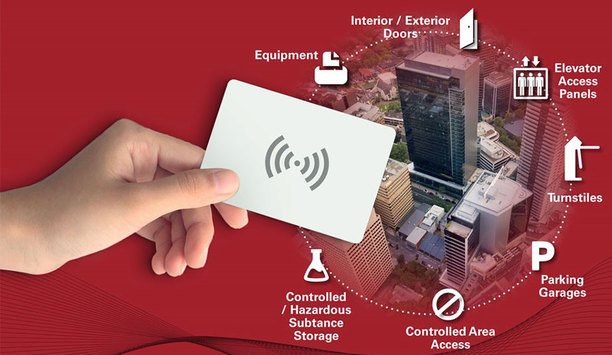
RFID and smartphone readers in physical access control
Download
Modern, flexible access control secures HafenCity University
Download
How to keep students safe on campus
Download
Video Surveillance: Lessons from the education market
Download
Best practices for integrating mobile into the access control architecture
Download


Multi-residential access management and security
Download
Guide for HAAS: New choice of SMB security system
Download
Precision and intelligence: LiDAR's role in modern security ecosystems
Download
Hikvision: Solar powered product introduction + HCP
Download
Artificial intelligence
Download

